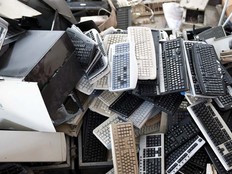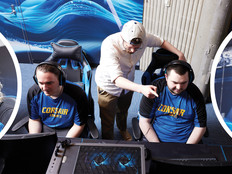Temple University's TECH Center Extremely Popular Among Student Body
Too often, writers who cover technology do so in a passive position: They sit at their computers, surf the Internet for information, work their contacts and sources over the phone, and then crank out articles without ever getting their hands dirty. We're all guilty of doing that because technology makes it easy – and comfortable – to “cover the bases” and write an article fast and then move on to the next assignment.
But the resulting articles often lack the insight, perspective and color that a writer obtains from going into the field. It's not enough to report on new or improved hardware or software. What is critical today is ensuring that IT departments implement technology that's measured by how well it improves the mission of the university and all the constituencies it serves.
Making a Difference
My recent road trip to Philadelphia proved that to me firsthand. I visited Temple University, a state school whose mission has always been to educate the children of the city's working class.
What I found is that technology is making a real difference by leveling the playing field between the haves and have-nots. At Temple, the school opened the TECH (Teaching, Education, Collaboration and Help) Center in January. This 75,000-square-foot, $16 million technology center houses 700 computers and an array of labs that cater to music, engineering and other disciplines.
Originally, administrators weren't sure if the investment would pay off in student use because Temple is largely a commuter school. However, they were amazed when the center had more than 432,000 visits from 20,000 individuals during the spring semester. Even on weekends, students socialize at the center and have coffee at 3 a.m.
And the TECH Center is now one of the first stops on the guided campus tour, during which the school proudly showcases the center to high school students and their parents.
The center has become the place to do homework and research, write reports and hold study groups. Of course, there's also a Starbucks in the center where students relax and socialize. And even the vending machine, which used to house snacks and candy, is now filled with office supplies and other work-related items for students on the go.
One student told me that he uses the center's computers to do research and projects instead of using his notebook PC, which he considers his entertainment and communication device. Moreover, he lives off-campus and would have to lug his notebook around all day if he couldn't use the center.
Many other students packed the center's breakout rooms to work on group projects or join in study groups. In fact, more than 4,000 room reservations were made in the first semester.
In addition, the center houses a facility for training faculty to use computers and classroom technology. It offers a variety of training sessions there.
“We weren't sure if the center would be successful,” says Timothy O'Rourke, vice president, Computer and Information Services. “There was much debate among faculty, administrators and others about building such a center because other schools were going in the opposite way – wireless campus and laptop-oriented. But we felt this was right ... and we were stunned by the results.”
At higher ed institutions around the country, technology is making a significant difference. ... I definitely need to get out more.
Tom Halligan is editorial director of Ed Tech.







